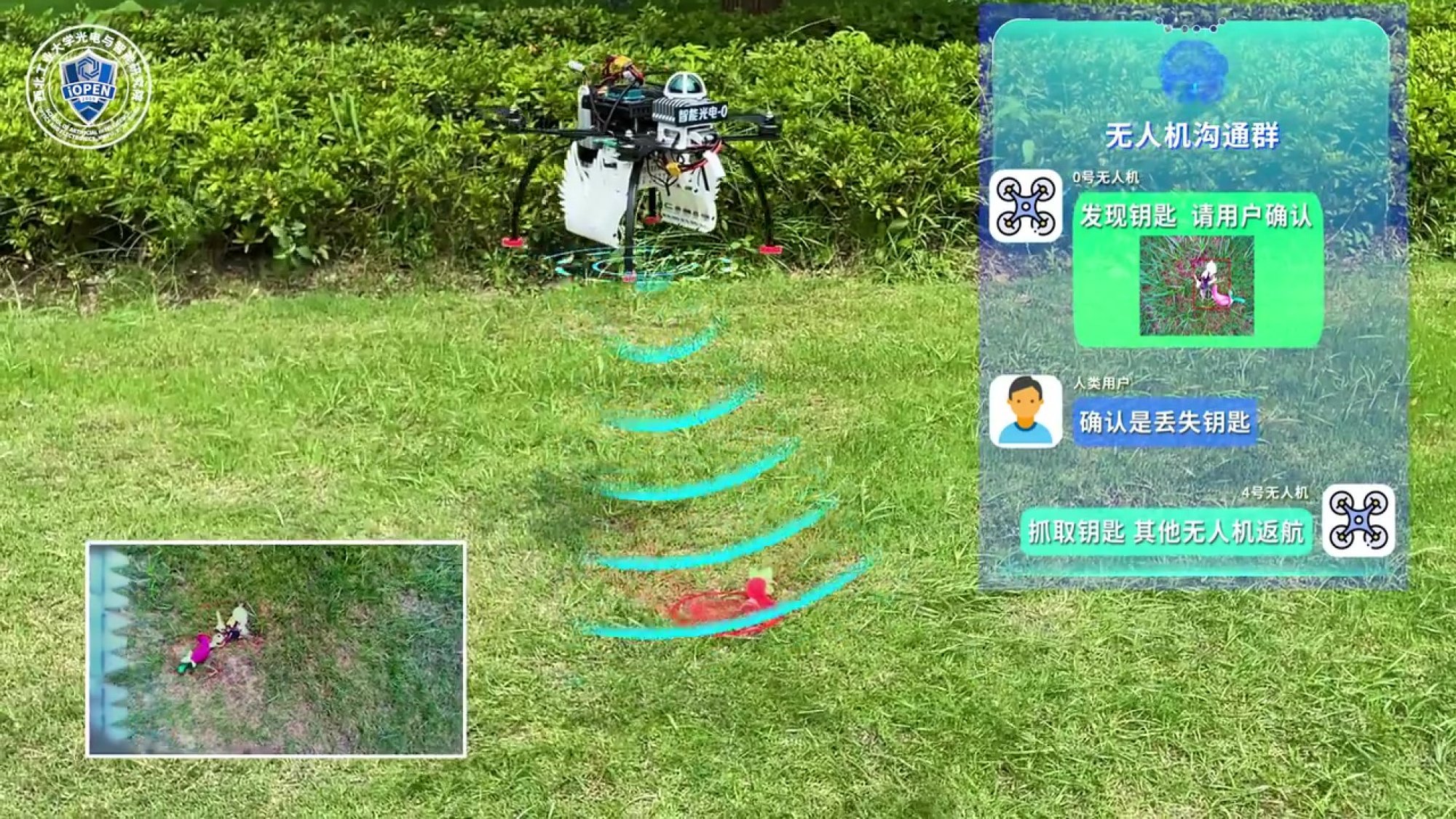China’s innovation in drone technology has now reportedly taken a massive leap with the development of unique drones that can converse and divide work among themselves in “group chats,” akin to human teams.
The Chinese scientists who have created these drones said that the technology could be applied to enhance airborne logistics, disaster relief operations, and security patrols, as reported by Hong Kong-based publication South China Morning Post.
The technology has been developed by Li Xuelong and his colleagues from Northwestern Polytechnical University in Shaanxi province’s School of Artificial Intelligence, Optics, and Electronics.
The technology that allows the swarm of drones operating together to converse and work together like humans is significant because it is in contrast to the usual communication tactics for drone swarms that are created to mimic bee and ant colonies.
It is believed that Chinese researchers can better comprehend the behavior of machines by using drone group discussions to develop a transparent mental model for humans.
According to a WeChat post from the university’s official account, the research integrates massive language models like ChatGPT into real-world applications, bringing them “to life.”
Along with the announcement, there was a video that demonstrated how five drones working together as a team successfully located a set of keys in an outdoor park as part of a task that they were duly assigned.

After a user assigned the drones a search assignment in the key-finding experiment, three drones immediately “volunteered” their search skills, while two others — equipped with grippers — told the group they could find the keys. The drone cluster autonomously determined how to divide the jobs.
The drones also sent photographs of the location of the keys to the user via the group chat to confirm. The report by the Chinese team said, “This level of dialogue at crucial points significantly improves the stability and safety in executing complex tasks.”
Every one of the four drones had a designated search area. The drones maneuvered in unison to cover these areas effectively while searching for the keys. To direct their efforts, they created a simplified map of the site. They could also recognize and avoid human operators in their path, resulting in safer flights.
According to the WeChat post, “the drones showcased key abilities, including humanlike dialogue interaction, proactive environmental awareness, and autonomous entity control.” The drone cluster’s capacity to instantly modify its flying state in response to input from the surrounding environment is known as autonomous entity control.
Each drone is given a “human brain” by the technology, enabling them to communicate in ordinary language. The research states that this capacity was built using an open-source Chinese language model known as InternLM.
The ability to have dialogue breaks down boundaries between humans and robots by allowing operators and drones to converse in human language. The drones are capable of collecting data and carrying out duties quickly since they are equipped with several sensors and algorithms for low-altitude search, dynamic obstacle avoidance, and visual positioning. These drones are also built to sense their environment from varied angles and locations.
The report from the Chinese team that has developed these drones stated that the technology would assist security inspections, disaster relief, and drone-based transport and logistics. Although the technology has not been officially earmarked for military use, China is notorious for its dual-use technology, which is often co-opted by the People’s Liberation Army.

China Is Hoping To Ace The Human-Machine Synergy
By 2027, the Chinese government wants to become the world leader in humanoid robot technology, working tirelessly toward this goal. The Ministry of Industry and Information Technology (MIIT) has demanded improvements in artificial intelligence capabilities to go hand-in-hand with developments in the brain, cerebellum, and limbs of humanoid robots.
The ultimate objective is to build humanoid robots that can function in dangerous and challenging environments and behave more or less like humans, with maximum autonomy. The latest innovation, which allows drones to adapt to the human lexicon, could, thus, pave the way for more independence among these drones operating together.
This becomes even more significant given that technologically advanced countries worldwide, including China, are investing in swarm drone technology to make military and civilian operations more convenient and practical. China gave a sneak peek into its swarm drone development in 2020. However, the autonomy with which drones operated triggered hysteria, with military watchers calling it mere propaganda.
The skepticism surrounding the technology, however, has not stopped the Chinese from taking gigantic leaps. In August this year, China unveiled unmanned intelligent technology, including a drone swarm system that could self-repair. That system was developed by the academies of the Chinese People’s Liberation Army.
China has made no bones about its desire to make use of autonomous systems and Artificial Intelligence for military as well as civilian applications. China debuted its drone light show during the World Fortune Forum in Guangzhou in December 2018.
In 2022, China Daily News published a video showing a drone swarm from Zhejiang University tracking a hypothetical target through a bamboo grove. Furthermore, Chinese media announced in the middle of 2022 that drones could launch off the Shandong aircraft carrier and swarm.
Owing to these developments, experts in the US Department of Defense, along with its friends and partners, started conjecturing China’s intentions and potential for using swarm technology in future conflicts.
Although there is little information about how the latest drones with “human brains” developed by Li Xuelong’s team will be used by China, its prior initiatives indicate that the country would test the technology for infrastructure and civilian interventions first.
- Contact the author at sakshi.tiwari9555 (at) gmail.com
- Follow EurAsian Times on Google News




